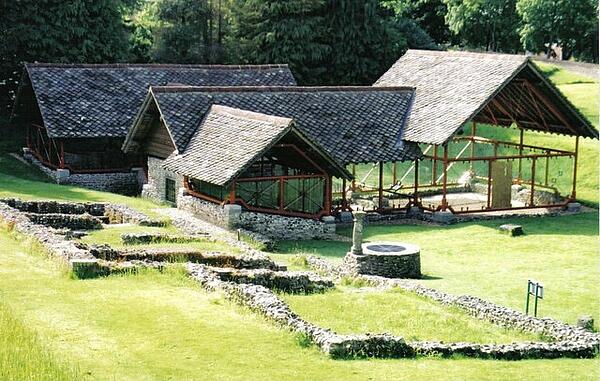Houses in Rome
The type of home you lived in during Ancient Rome depended on how much money you had.
If you were lucky enough to be rich, your house would be a high quality single storey building known as a domus, which lead towards an atrium (courtyard). Atriums often had rooftops but with an exposed opening to allow sunlight in, and to collect rain into the courtyard’s cisterns. Further on through the atrium was a second courtyard commonly known as a peristylum. Peristylums also included a garden with more rooms. Wealthy homeowners would use the garden to meet with guests whether the sun was at its most intense or in the cool of the evening.
The interiors of rich Roman houses were decorated with coloured plaster walls and mosaics in some cases (depending on whether you could afford it). These decor styles were especially chosen to reflect the family’s wealth and status. Fishbourne Palace in West Sussex is the remainder of a Roman home and contains the largest collection of mosaics in Britain.

Poor homeowners were not so fortunate with their living quarters; they lived in six to eight three storey apartment blocks grouped together around a centre courtyard, known as insulae. Just as rich people’s housing was designed to represent their wealth and high status, insulae were created to reflect the lack of a poor person’s wealth and reputation. Each apartment was made from wood and mud brick and was prone to collapsing or catching fire. There was no heating or running water available and quite often, no toilet. The upper floors were the cheapest to rent due to being the least secure, yet a whole family would have no choice but to live within the one or two rooms available. However the rooms would usually only be occupied for sleeping, as residents would be out during the day either working, bathing or eating at local inns.
Homeowners could be judged on their wealth just from observing their lead water pipes - the pipes were taxed according to size, so the bigger the pipe, the more tax was deducted.

Roman homes were the first to have central heating - known as a hypocaust or underfloor heating. Slaves had the responsibility of making sure the hypocaust stayed clean and lit throughout each day. Hypocausts were also used for keeping Roman baths heated if there was no other access to hot water.
Many Roman villas have been preserved in such good condition that it is easy for today’s archaeologists to gather information about how the ancient Romans lived.
See also: Roman Baths
MLA Citation/Reference
"Houses in Rome". HistoryLearning.com. 2026. Web.
